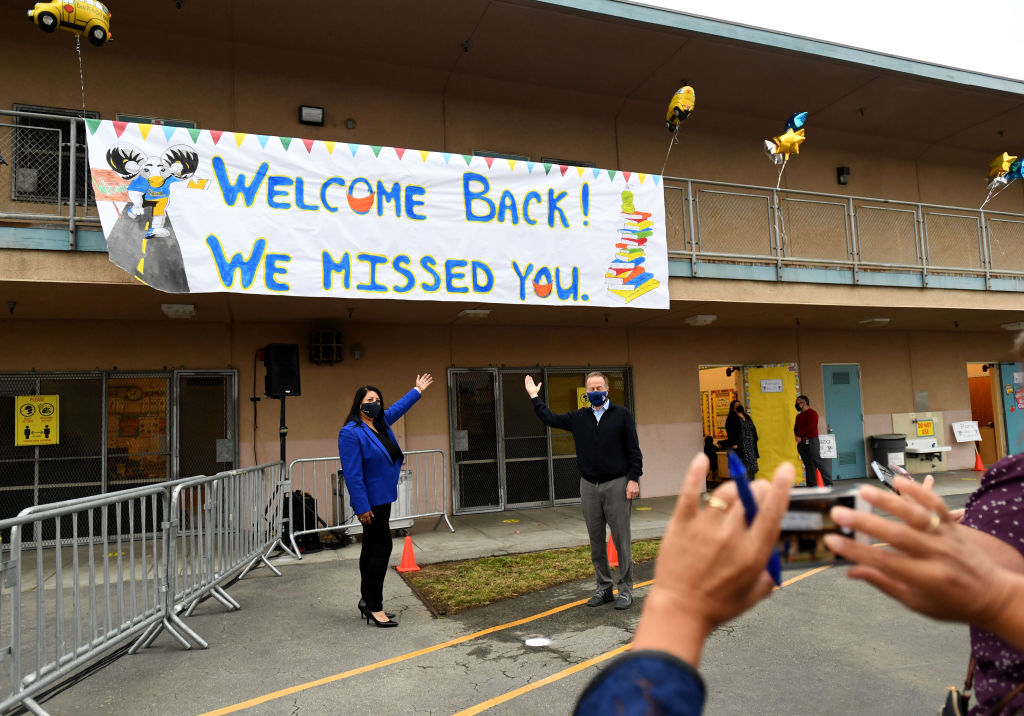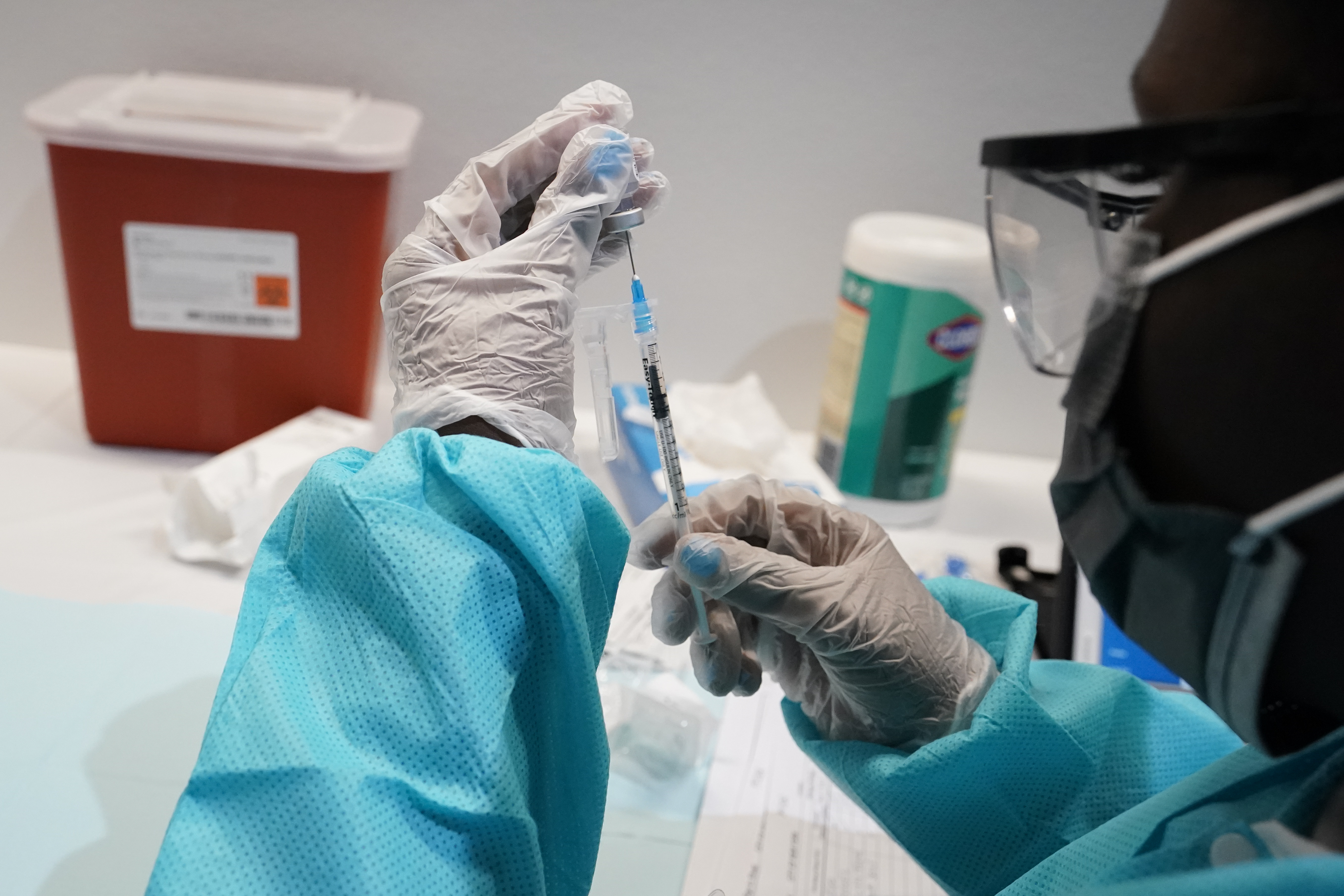When one of California's biggest owners of office space--The Irvine Company--wanted to make sure the air in its buildings was free of viruses, it hired a Bay Area company that showed up with spray bottles and skilled technicians.
The company, called SafeTraces, was testing the air in the offices to measure something called "air change"---the number of times per hour that the air in a room is totally changed through ventilation and filtration.
As millions of people are returning to their offices and workplaces for the first time since the pandemic began, public health doctors are realizing that sufficient "air change" is critical to preventing further spread of COVID-19 and other respiratory viruses.
It's now well documented the droplets from a cough or sneeze can spread viruses "which can stay in the air for 30 minutes to hours… and travel well beyond six feet" in a room, said Professor Joseph Allen, head of the Healthy Buildings Program at Harvard's T.H. Chan School of Public Health, in an article in the Journal of the American Medical Association.
Get Southern California news, weather forecasts and entertainment stories to your inbox. Sign up for NBC LA newsletters.
"One of the biggest surprises of the entire pandemic is that there’s been a failure to recognize the reality of airborne transmission," Professor Allen told the I-Team.
SafeTraces, headquartered in Pleasanton, CA, has now been hired by, and is measuring the "air change" in office buildings, universities, and public spaces such as Dallas-Fort Worth (DFW) Airport.
"Most employees won't really know if the air quality is good in their buildings," said SafeTraces CEO Erik Malmstrom.
The I-Team traveled to SafeTraces headquarters to see how the company tests the air in an office or workplace, using a spray that looks like air freshener. It's really a DNA-laced aerosol, called veriDART.
"It's intended to simulate a cough or sneeze," SafeTraces’ Malmstrom told the I-Team.
The DNA solution is sprayed in the air numerous times, then a machine captures air samples, which are then analyzed in a lab to see how many virus-like particles remained in the air. The results reveal the "air change" in a room.
If the air in a room isn't changed often enough, people could inhale airborne viruses and get sick.
"With SARS-CoV-2 [the virus that causes COVID], the majority of outbreaks involving 3 or more people have been linked… to airborne transmission," wrote Harvard's Professor Allen.
California COVID-19 Vaccinations
The map tracks the number of doses administered by a recipient's county of residence according to the The California Department of Public Health.
Source: The statewide totals for doses administered reflect Centers for Disease Control and Prevention data. Otherwise we used data from the California Department of Public Health.
Amy O’Kruk/NBC
The I-Team discovered that no government agency has yet set clear standards for air changes in a room, though Cal/OSHA told NBC4 “Cal/OSHA’s emergency temporary standards require employers to take steps to improve indoor airflow and filtration whenever possible. Cal/OSHA enforces these requirements by investigating complaints from workers, referrals from non-workers and notifications of work-related serious injuries, illnesses and fatalities.”
But Harvard's School of Public Health has determined there should be at least four complete changes of the air in a room every hour, "ideally" six changes.
"That means you're changing out air six times per hour or every ten minutes, through the combination of ventilation and filtration," said SafeTraces’ CEO Malmstrom.
In high risk settings like hospital operating rooms, the air is changed 12 times an hour, according to a U.S. Department of Defense study. On commercial airplanes, the air is changed through advanced HEPA filtration systems up to 36 times an hour. But in most indoor settings, the air change falls below the Harvard standard for healthy air.
"For example, in your home, typically you get half an air change per hour. In a school, we get less than 3 air changes per hour," said Harvard's Professor Allen.
When SafeTraces tested the air in its own conference room, similar to those in thousands of office buildings, the air was being changed only three times an hour, not the recommended six.
"We don’t think that’s enough," said the company's CEO.
But improving the air change in an office or home isn't necessarily expensive or complicated.
"It's really quite simple," said Harvard's Professor Allen. "You can sometimes accomplish it by opening up the windows a bit, or purchasing a portable air cleaners with a HEPA filter."
When SafeTraces put a movable HEPA filter in its conference room, the air went from being changed three times an hour to ten times an hour.
You can buy a HEPA filter starting at less than $100 online or at hardware stores.
Experts like Professor Allen tell the I-Team, in order to make sure the unit is powerful enough for your space, you should look at the product description to find something called the Clean Air Delivery Rate, or CADR.
“My rule of thumb is that you want a CADR of 350 for every 500 square feet. That will give you five air changes per hour, or more,” said Allen.
And experts suggest that as employees return to their offices for the first time since the pandemic began, they ask their bosses a few questions about "air change" and ventilation.
"They should ask, 'What have you done to make the space safer? Where is the ventilation and filtration system today?’ People should be transparent at this point. It’s people’s health and safety and lives that are at stake," SafeTraces CEO Malmstrom told NBC4.



